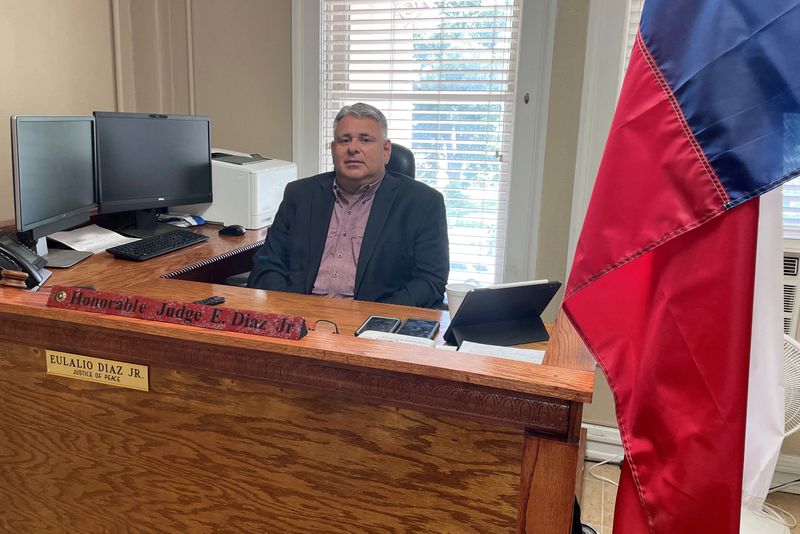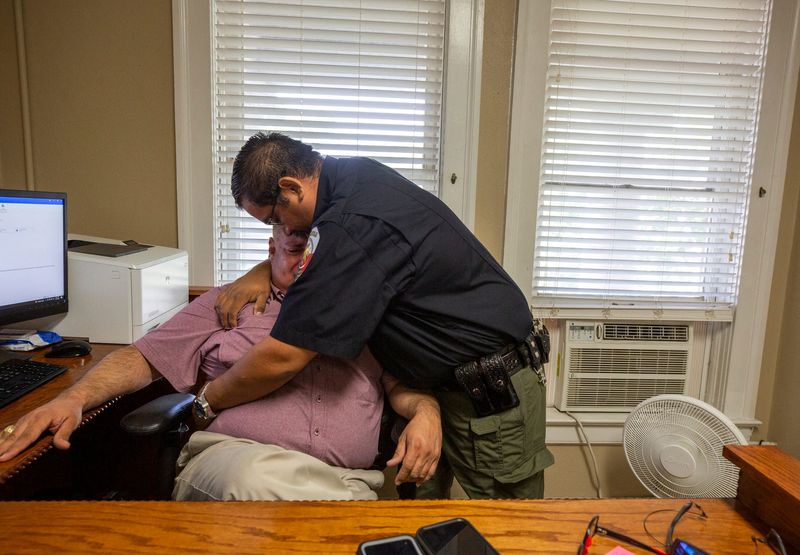By Brad Brooks
UVALDE, Texas (Reuters) -Eulalio Diaz Jr. walked into the classroom where 19 children and two teachers were shot to death just a few hours before, looked down on the floor and saw one of his high school classmates.
Elsewhere in the hellish scene were the bodies of fourth graders - mostly 9- and 10-year-old children - whose parents were friends of his.
As the Justice of the Peace in the little city of Uvalde, Texas, where a gunman went on one of the deadliest school shooting sprees in American history, Diaz had the horrific task of identifying the bodies. His duties would usually center on small court cases and officiating weddings, but because Uvalde does not have a medical examiner, Diaz has to act as coroner of the county, giving him the role of identifying the dead.
Before entering Robb Elementary School to begin the identification process, Diaz, 49, said he tried to prepare himself for the worst possible scene he could imagine.
What he witnessed went well beyond that.
On the floor of the classroom where all of the victims died was the body of Irma Garcia, one of the two teachers killed.
"She was a year behind me in school, at Uvalde High School. We were together through junior high and high school," Diaz told Reuters in his office in the Uvalde County Courthouse. "We really know who these victims are."
When a tragedy of this dimension hits such a small place, it's like tossing a large rock into a tiny pond - the ripples of pain seem inescapable.
"When I got home last night after identifying all the victims, I started to get Facebook (NASDAQ:FB) messages, and I realized that I knew the parents and even grandparents of many of the kids," Diaz said.
The process of identifying the children was excruciating - "children don't carry IDs, they don't have name badges," Diaz said.
Many of the bodies were in bad shape. Diaz tried to spare the parents as much pain as possible, hoping to positively identify the murdered children through descriptions their parents gave of clothing they wore to school that day, of photos parents showed him.
But it wasn't enough. The bodies were too shot up. The Texas Rangers ordered DNA swabs of family members.
"My job is to make sure that we release the body of the correct person to their family," Diaz said, as his voice trailed off. "My job is to get the bodies of these children back to their families."

Diaz holds out hope that the very reason why so many in Uvalde feel such pain - because "everybody knows everybody" - will also help them heal quicker.
"We all feel such anguish. But we all are here to support one another," he said.
